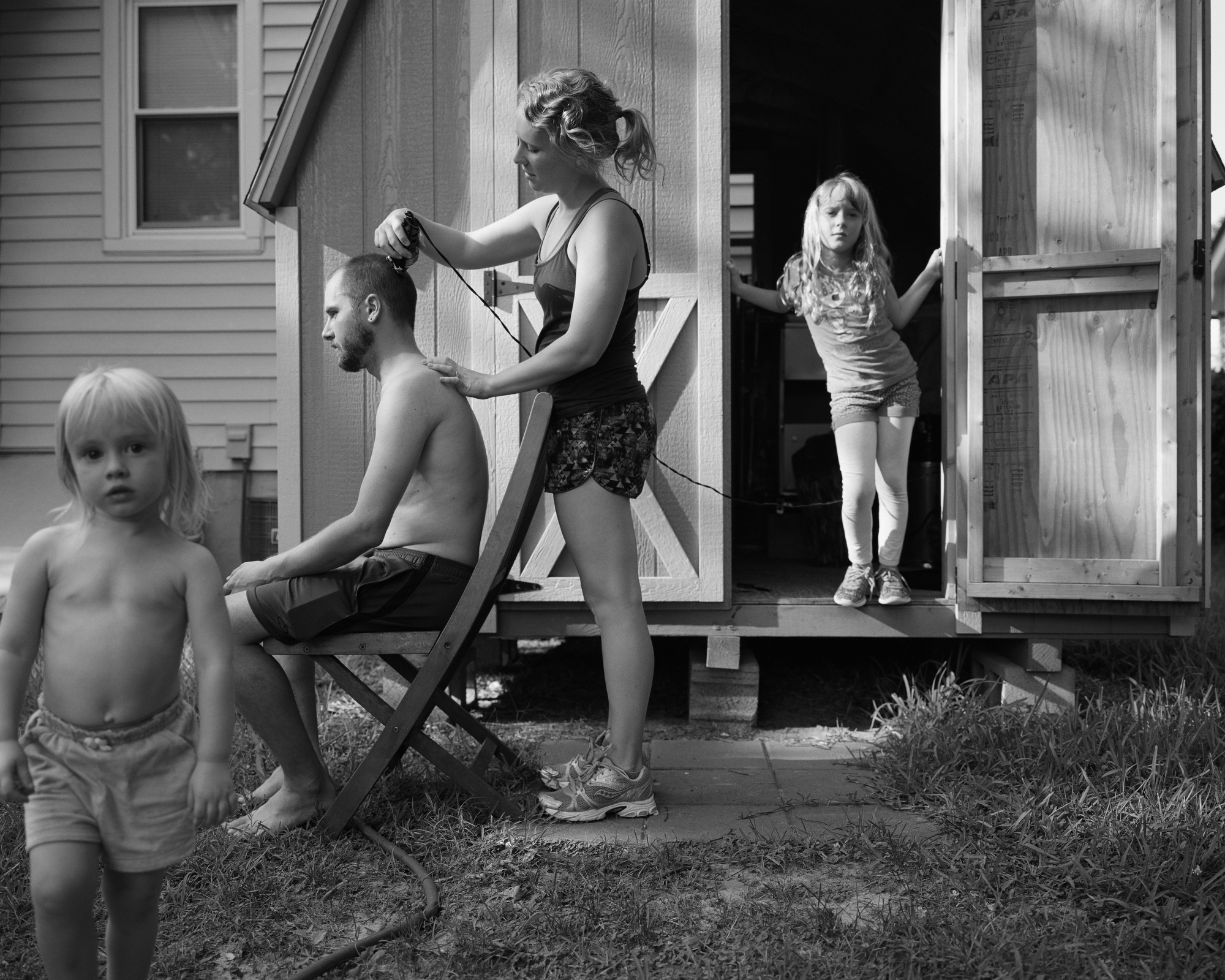Imagine another internet. Location specific, not through geofencing, but through the physical limits of its infrastructure, able to be visited by subway or on foot, unique like the very neighbourhood its in.service providers, there are web pages here that can only exist here, some created by you, others by your neighbours. This virtual territory is the Othernet, a project created by Dhruv Mehrotra.
Between Nostrand and Bedford on Monroe Street, New York, there is, as Dhruv Mehrotra likens it, “a virtual territory or internet island with customs and rules determined by the network.” On this network there is no Facebook, no Google and no internet service providers, there are web pages here that can only exist here, some created by you, others by your neighbours. This virtual territory is the Othernet, a project created by Dhruv Mehrotra.
Dhruv Mehrotra’s work has often explicitly been focused on the political and community, from projects that centred heavily around researching land usage in the United States. Using radio frequencies to educate activists as to how to engage in things like counter surveillance and building privacy tools, to building infrastructures that are independent from ISP’s and major tele-codes. As an undergraduate at NYU, when Occupy Wall Street began. This was the first time Mehrotra saw the types of ways in which technology could facilitate direct action, civic engagement, and coalition building. Along with friends, Mehrotra built a resource sharing application for those camped at Zucciotti Park. This resource sharing application, CCU, partially funded by the Red Cross was then implemented to assist in the aftermath of hurricane Sandy. From CCU Mehrotra began to explore and think about security tools for activists, especially after the Snowden revelations, asking questions on how can we learn to trust our devices? How can we trust infrastructure?
What is the Othernet? Imagine another internet. Location specific, not through geofencing, but through the physical limits of its infrastructure, able to be visited by subway or on foot, unique like the very neighbourhood its in. An autonomous, decentralised network experiment that explores what new types of sharing, intimacy, and trust can emerge in a network built in a context. “The formation of space that is autonomous from the internet as we know it. Built by and for the community in which the infrastructure lives.” The Othernet is meant for a different distance, for neighbourhoods, streets and communities. Mehrotra likens the Othernet to internet islands, with web pages and content submitted by you and your neighbours that can only be viewed and accessed by people in, or passing through your neighbourhood. Once connected to the Othernet, in the same familiar way we would connect to any other network, you can open the browser, automatically being redirected to the Othernet’s internal search engine.
Through a simple login, that ensures that your page is only editable by you, you can now create and share content. Creating a page on the Othernet is made simple by uploading a file or using the custom page builder, “Sites on the Othernet can range from the practical to the absurd. www.soul-collections. sewing shop is a site for an alterations store nearby that has open equipment hours for neighbours, offering a deal to the Othernet through this page. www. national-gourmet.deli is a website for a deli that Omar, a teenager that works behind the counter has made. www. origins-of-totalitarianism.book a book that I uploaded. There are about 100 books on the Othernet uploaded right now.” With other sites and files such as community boards, artists sites and anarchist zines, there is a diverse range of content and sites, some funny, some serious, but all of these sites are only available in this location. “While the internet continues to develop into a tool for institutional control and corporate surveillance, I believe that the local area network can function as a site for resistance, coalition building, and the emergence of distinct more intimate types of communication.”
The first version on the Othernet was completed in May of 2017. Dhruv Mehrotra is now a research resident at Eyebeam, a social justice focused non-profit that merges art with tech- nology. Mehrotra over the course of developing the Othernet has kept a log at Othernet.xyz were information on this project and the infrastructure can be found. It is also a place that Mehrotra discusses some of the situations that have occurred in the seven months that the network was online. Below is a short discussion with Dhruv Mehrotra and some of the situations observed and written about in a post from 11-12-2017.
JW: I’d like to start by talking about this project and some of your recent findings and observations, the first being the use of the Othernet and surveillance. I’m talking of course about Taco the dog and Mr. M; could you talk a little about this issue and some of the extending questions such your personal ethics, regarding your own involvement as network operator?
DM: The surveillance that I have seen on the the Othernet takes the form of community policing. Communities have their own rules about what they will or will not tolerate, and I am not in the position to make a value judgement about that. However, as a member of the community at Monroe St., I do feel entitled to point out my concerns about the incorporation of things like IP Cameras on the block. Things get more complicated when working with communities you are not part of. I don’t have a good answer for how I negotiate my personal ethics with the standards of a community I don’t belong to, in part this is because the situation hasn’t presented itself. This is a very boring answer to a very difficult question.
An autonomous, decentralised network experiment that explores what new types of sharing, intimacy, and trust can emerge in a network built in a context. “The formation of space that is autonomous from the internet as we know it. Built by and for the community in which the infrastructure lives.”
JW: The Othernet seems to be naturally honest in its approach to a community network, ran by those who use it, do you think that it’s use on a large scale will ultimately end in its use for resistance, organisation and community building, or are you worried that it would shift away from its full potential?
DM: The Othernet as a name is misleading in that it suggests a single monolithic alternative to the Internet. However, the real vision is more like a series of autonomous internet islands networks defined by the effort of the community and whose potential is determined by those who participate. I can imagine a city having several “Othernets”, each one as distinct as the community that supports it. So by the virtue of the Othernet being a network with physical borders, the question of scale has less to do with the size of each individual island as it does with participation.
I think what you might be getting at here is that resistance is necessarily adversarial and begins in the margins. On a large active network, radical opinions may be drowned out by popular opinion, for better or for worse.
I think what the Othernet offers is a way for people to seek each other out and build coalitions IRL. This is a fundamentally different model than what we see on the internet where geographically atomized individuals connect over great distances of wire.
JW: Given the nature of the network there seems like the option of having mini networks within the network, using agreed upon domains for example, that would define an area of interest or restriction. Are you worried about the Othernet having potential dark web like areas, and do you feel that there should be natural rules set in place or should the community be left to decide?
DM: I believe the community has to decide what it will and will not tolerate on its network and I think its my role to build tools that can accommodate the choices that a community might make.
JW: How do you go about introducing your community to the Othernet and do you think that having introductions to this network effects the way it is used?
Imposing technology on a community is another form colonialism. As such, to build a community network respectfully involves education and outreach fully integrating digital resources into the territory where the network will exist.
DM: Imposing technology on a community is another form colonialism. As such to build a community network respectfully involves education and outreach – fully integrating digital resources into the territory where the network will exist. I think working with existing organisations is a smart way to build maintainable networks. The Othernet is still in its infancy. With the support of Eyebeam I’m now working with a few different communities around New York to see where Other- nets might be possible. As such I’m being exposed to many community organisations I didn’t know existed. I think if you don’t build things in partnership with the community where your network will live, no one will use the network. Your routers will just blast radiation into the void.
JW: You have spoken about forms of colonialism and control online, what are some of your biggest issues regard- ing the internet as is stands today?
DM: Control manifests itself on every level of the internet, from its infrastruc- ture to its applications. Internet infra- structure has consolidated to the point that there are only a handful of ISPs to choose from. I hate speaking in these terms but, this is a failure of neo-liberal capitalism. These are natural monop- olies that when the market goes fully unchecked and its absurd to imagine an unregulated network where this wouldn’t occur. What this means on a practical level is that there are entire populations of people who don’t have access to the Internet simply because the ISP’s calculus is that these people won’t make them money. I’m thinking here of first nation communities in the United States. These communities are tremendously under-served by ISP’s.
On the application side, the consolidation of our online attention into the hands of a few major information-monopolies like Facebook, Google, Netflix, and Amazon means that access to content has and will continue to be curated and managed regardless of how network infrastructure
is regulated. The effects of this are immense: from privacy violations to election meddling. But what this also means is that as more people are connected to the Internet Infrastructure the more they can are assumed into an ecosystem of applications built by mostly white men. Minorities are only legible on the web when they can be smoothly enveloped by a larger market of western understanding.








